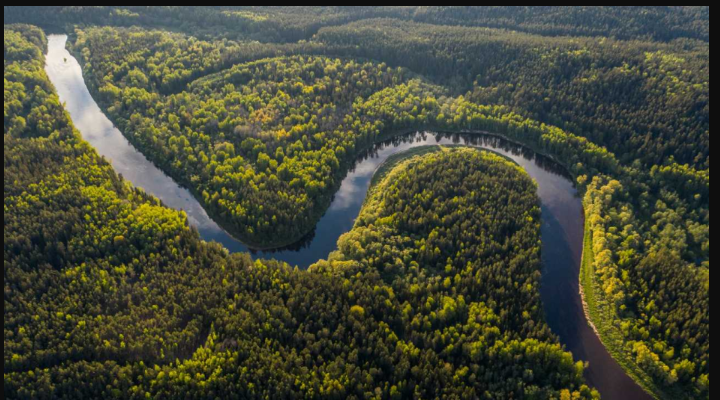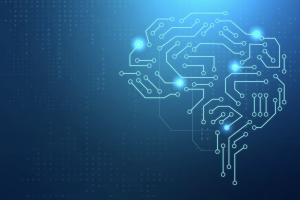The University of Los Andes, the Humboldt Institute, and the SINCHI Institute in Colombia, in collaboration with Microsoft, have developed an AI platform that processes satellite data, bioacoustic recordings, and camera trap footage.
The project aims to monitor deforestation and biodiversity in the Amazon.
This innovative and powerful tool will provide key information to protect a critical ecosystem essential for global climate stability.
With 7 million km² and spanning nine countries, the Amazon is the largest tropical forest in the world, home to 10% of the planet’s biodiversity and responsible for delivering humidity and rainfall across South America, which helps stabilize the global climate. However, due to activities like illegal mining, agricultural expansion, overfishing, hunting, and deforestation, this unique ecosystem is under serious threat.
According to the 2022 Amazon Alive Report (WWF), 18% of Amazonian forests have been lost completely, and an additional 17% are degraded, with numbers expected to worsen, impacting biodiversity, global climate, and people—especially the 47 million residents in the Amazon region who rely on it for their livelihoods.
To help address these threats, in 2022, the project Guacamaya: AI for the Amazon emerged, backed by Microsoft’s AI for Good initiative, focused on promoting the use of Artificial Intelligence to address social and environmental challenges. The platform leverages AI to provide science and government with accurate, timely data on phenomena negatively impacting this unique global ecosystem. “Guacamaya emerged from a collaborative exploration between Microsoft and the University of Los Andes in Colombia. Through its Research and Training Center in Artificial Intelligence, CinfonIA analyzed how AI could address environmental challenges, including Amazonian deforestation. A key tool for this analysis was training an AI model that prioritized data quality. We sought collaborators with validated, high-quality data, leading to partnerships with the Humboldt Institute and the Amazonian Institute of Scientific Research, SINCHI,” explains CinfonIA researcher Andrés Hernández Celis.
The Amazon was chosen as a focal point due to its critical importance for global biodiversity, especially in Colombia, which has the highest biodiversity per square kilometer. “The Amazon rainforest influences climate patterns and provides water to regions like Bogotá and the páramos. However, deforestation has reached a critical point, threatening to turn this natural ecosystem into desert, which underscores the urgency of leveraging AI to tackle this goal,” Hernández adds.
This led to the development of real-time AI-based systematic monitoring and data delivery—capable of generating alerts to take action before the situation becomes irreversible.
AI with Environmental Impact
Guacamaya draws on three data sources from the Colombian Amazon: bioacoustic recordings, camera trap images, and satellite data on vegetation cover. Bioacoustic data is provided by the Humboldt Institute—Colombia’s leading biodiversity science organization and home to the region’s largest biodiversity repository; camera trap images are contributed by the Faculty of Sciences at the University of Los Andes, while satellite data is sourced from the SINCHI Institute and the Colombian Institute of Hydrology, Meteorology, and Environmental Studies (IDEAM).
Andrés Rengifo, Microsoft’s Director of Corporate, External, and Legal Affairs for the Andean South region, explains that by integrating aerial, acoustic, and camera trap data, the project achieves a 360º view of the Amazon, resulting in a richer and more accurate understanding of the environment. “Generative AI offers valuable benefits for decoding data and optimizing processes, and Guacamaya demonstrated this by connecting all the scientific information, traditionally isolated in universities or research institutes, on this platform,” he explains.
The scientific institutions contributed over 100,000 files, enabling CinfonIA and Microsoft to train algorithms capable of using sounds and images to detect the presence or absence of specific species. This provides valuable insights into the state of biodiversity in this part of the Amazon.
“AI training and refinement is an ongoing process with continuous data input, but these algorithms already had a strong foundation from similar analyses, allowing their adaptation to the Amazon ecosystem. The success of this project lies in the synergy created among diverse entities. Each institution brings its expertise and resources, creating a multiplier effect that yields innovative, effective solutions for complex issues like climate change and biodiversity conservation,” says Rengifo.
Microsoft fuels Guacamaya with algorithms and computing capacity essential for running intensive models that facilitate scientific research and human resources. “We have robust computational power on our Azure platform, the foundation for running these systems and storing information, allowing us to gain new insights and develop approaches to better understand this data. We contribute models, tools, computational capacity, and a highly specialized team dedicated to addressing social and human challenges through technology,” explains the Microsoft executive.
Revolutionary Methodology
The introduction of AI to studying the Amazon ecosystem has completely changed how information is gathered from this globally significant biological reserve.
To develop one of the most important natural sound repositories in South America over 25 years—collecting 25,000 audio files from over 1,300 species—biologists at the Humboldt Institute used limited-capacity recorders placed and retrieved from the forest. These were then delivered to experts in vocalization recognition, who spent months listening to audios and identifying species.
But the arrival of Guacamaya has revolutionized this field, and after a year and a half of work, the first results are evident. Today, AI algorithms not only identify bird sounds with 80% accuracy, analyzing data five times faster, but they can also detect threats like illegal logging and machinery. “In the bioacoustics field, a model was developed in collaboration with the Microsoft Speech Lab, converting sounds into spectrograms, which are visual representations of sound,” explains CinfonIA researcher Andrés Hernández. These spectrograms, combined with natural text (such as species names), help identify bird or insect sounds or specific frequencies, he notes.
The processing of camera trap images is also benefitting from the initiative. “Previously, a scientist manually reviewed over 100,000 images, but now Guacamaya does it automatically, conducting monitoring 10 times faster and saving 90% of the time. The algorithms filter useful images and identify specific animals, facilitating efficient analysis and the detection of rare or invasive species,” Rengifo explains.
Currently, the pre-trained models of the Guacamaya project are available on PyTorch Wildlife, Microsoft’s open-source platform for biodiversity, encouraging collaboration among developers in the field. “PyTorch Wildlife provided us with a collaborative deep learning framework for conservation, including various neural networks to tackle specific project tasks. An example is animal segmentation and detection in camera trap images using Microsoft’s Megadetector,” explains researcher Andrés Hernández.
Another significant contribution of Guacamaya is its ability to interpret satellite images of the Amazon forest in real time. According to official data from Colombia’s Institute of Hydrology, Meteorology, and Environmental Studies (IDEAM), the Colombian Amazon lost more than 40,000 hectares between 2021 and 2022. “Guacamaya uses high-resolution images to monitor forest loss, speeding up forest cover reports and enabling near-real-time conservation decisions. This contrasts with traditional reports, which in Colombia had an 18-month delay,” clarifies Rengifo.
Open Source
CinfonIA researcher Andrés Hernández highlights that the biggest technical challenge in training the algorithms has been data management. “For example, it is crucial to have detailed camera trap images to accurately identify species. This is difficult due to variations in the images and the uneven distribution of species in the database. Some species are common and overrepresented, while rare species appear fewer than 100 times. This imbalance presents a considerable challenge, as it requires managing an unbalanced data distribution.”
This explains why the mega data from each pillar—camera traps, sounds, and naturalist coverage—has been trained through either proprietary or pre-defined models, with bioacoustic and camera trap algorithms being the most advanced. “For satellite images, we are refining temporal consistency, which will enable reliable results at different times and avoid instability at forest cover map edges, thereby improving the accuracy of reforestation measurements. The main goal of our model is to expand current research by integrating the project’s three pillars into a platform to analyze the relationship between biodiversity loss, animal migration patterns, and deforestation across different regions,” Hernández explains.
To achieve scalability, Guacamaya was designed as an open platform for scientific collaboration, and in this new phase, following its official launch at the end of 2023, it aims to consolidate data on the Azure platform and invite more international institutions to participate in Amazon monitoring. “This project was designed to allow other members of the scientific community and countries like Peru, Ecuador, Bolivia, Brazil, Paraguay, Venezuela, Suriname, Guyana, and French Guiana to join and contribute. Open collaboration is essential for addressing challenges like climate change and gaining a global, comprehensive perspective on what is happening in this ecosystem,” states Microsoft executive Andrés Rengifo.
Adding data from diverse sources is therefore vital to continue improving algorithms and generating more in-depth and accurate analyses of the Amazon. To this end, the source code of the models and the platform is available to any research center or scientist interested in contributing to the protection of this area. “At Microsoft, we believe technology is a crucial tool for addressing challenges like climate change. We have received support from scientists and the Colombian government, who have provided data and shown enthusiasm in seeing how the platform operates and the potential of technological collaboration in biodiversity conservation,” says the Microsoft executive.
The Guacamaya team continues to work on improving the algorithms and expects to have functional models in each category to present the initiative’s progress at COP16 in Cali, Colombia. “This initiative is not just the responsibility of a single country or group; it is a joint effort that involves the entire Amazon region and beyond. Our goal is to expand this tool to institutions and organizations in other countries working in the Amazon to join the Guacamaya project. The Amazon is not only a natural treasure but also the planet’s lung that regulates the global climate. Protecting this invaluable ecosystem is a shared responsibility that transcends borders and requires a collective effort from all Amazon countries and the international community,” concludes CinfonIA researcher.









